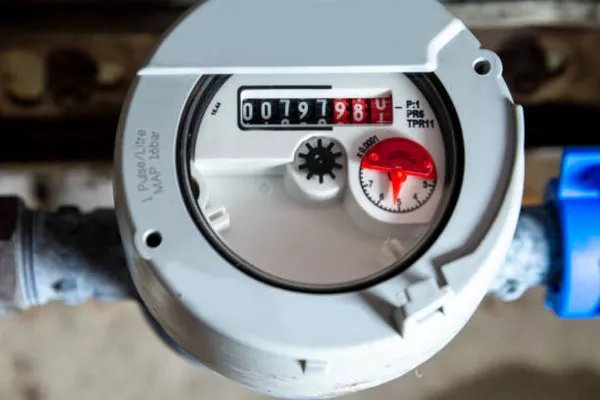In the world of fluid measurement and control, precision and accuracy are paramount. Industries ranging from oil and gas to wastewater treatment rely on accurate flow measurements to optimize processes, ensure product quality, and enhance safety. Thermal mass flow meters have emerged as an essential tool for precisely measuring gas flow rates. This article will delve into the inner workings of thermal mass flow meters, shedding light on the principles, applications, and benefits of these ingenious devices.
Principles of Operation
Thermal mass flow meters work on the fundamental principle that the rate of heat transfer between a heated sensor and a fluid is proportional to the mass flow rate of the fluid. In simpler terms, they rely on the cooling effect that a flowing gas has on a heated sensor.
The key components of a thermal mass flow meter include:
Sensor: The heart of a thermal mass flow meter is its sensor. This sensor is typically composed of a small, electrically heated element, often made from platinum or another heat-resistant material. The sensor is designed to reach a constant temperature when exposed to a flowing fluid.
Temperature Sensors: These are secondary sensors designed to measure the temperature of the fluid.
Flow Tube: The flow tube is the part of the meter through which the fluid flows. It houses the sensor and temperature sensors.
Control Electronics: These electronics are responsible for controlling the power supplied to the heated sensor and processing the temperature measurements.
The Working Process
When a gas flows through the flow tube of the thermal mass flow meter, it impacts the heated sensor. As the gas passes over the sensor, it extracts heat from it, leading to a temperature drop in the sensor. The control electronics constantly monitor and regulate the power supplied to the sensor, maintaining a consistent temperature differential between the sensor and the fluid.
The power required to maintain the temperature differential is directly proportional to the mass flow rate of the fluid. By measuring the power required to maintain the sensor’s temperature, the meter can accurately calculate the mass flow rate of the gas passing through the flow tube.
Applications of Thermal Mass Flow Meters
Thermal mass flow meters are used across various industries due to their accuracy and versatility. Some notable applications include:
Natural Gas Measurement: In the oil and gas industry, thermal mass flow meters are used to measure natural gas flow rates for custody transfer, process control, and emissions monitoring.
Aerospace and Aviation: These meters are employed in aircraft fuel systems to monitor and control fuel consumption accurately.
Environmental Monitoring: Thermal mass flow meters are used in stack emissions monitoring and environmental compliance to measure the flow of gases emitted by industrial processes.
Semiconductor Manufacturing: The semiconductor industry relies on thermal mass flow meters for process gas control and monitoring.
Wastewater Treatment: In wastewater treatment plants, these meters measure the flow of gases like methane, carbon dioxide, and oxygen for process optimization.
Benefits of Thermal Mass Flow Meters
Accuracy: Thermal mass flow meters offer high accuracy, making them suitable for critical applications such as custody transfer and emissions monitoring.
Low Pressure Drop: These meters have a minimal pressure drop across the flow tube, which is advantageous in situations where energy conservation is a priority.
Wide Turndown Ratio: Thermal mass flow meters can measure a wide range of flow rates, providing flexibility in various applications.
Low Maintenance: They have no moving parts, reducing the need for maintenance and enhancing their reliability.
Fast Response Time: Thermal mass flow meters provide rapid measurements, allowing for real-time process control.
Direct Mass Flow Measurement: Unlike volumetric flow meters, thermal mass flow meters measure mass flow directly, which is particularly valuable when dealing with gases of varying densities and compositions.
Challenges and Considerations
While thermal mass flow meters offer numerous benefits, there are some challenges and considerations to keep in mind:
Gas Composition: The accuracy of thermal mass flow meters can be affected by variations in gas composition. It is essential to calibrate the meter for the specific gas being measured.
Installation: Proper installation is crucial for accurate measurements. Factors such as upstream and downstream piping, flow disturbances, and temperature gradients can affect meter performance.
High Temperatures: Thermal mass flow meters may not be suitable for extremely high-temperature applications as they can damage the sensor or cause drift in measurements.
Condensation: In applications where there is a risk of condensation forming in the flow tube, it’s important to select a meter with appropriate protection against moisture.
Conclusion
Thermal mass flow meters are invaluable tools in a wide range of industries, providing accurate and reliable measurements of gas flow rates. Their principle of operation, based on the heat transfer between a heated sensor and a flowing fluid, makes them suitable for applications where precision is essential. By understanding the mechanics, benefits, and considerations of thermal mass flow meters, engineers and operators can make informed choices to improve process control, product quality, and environmental compliance in their respective industries.

